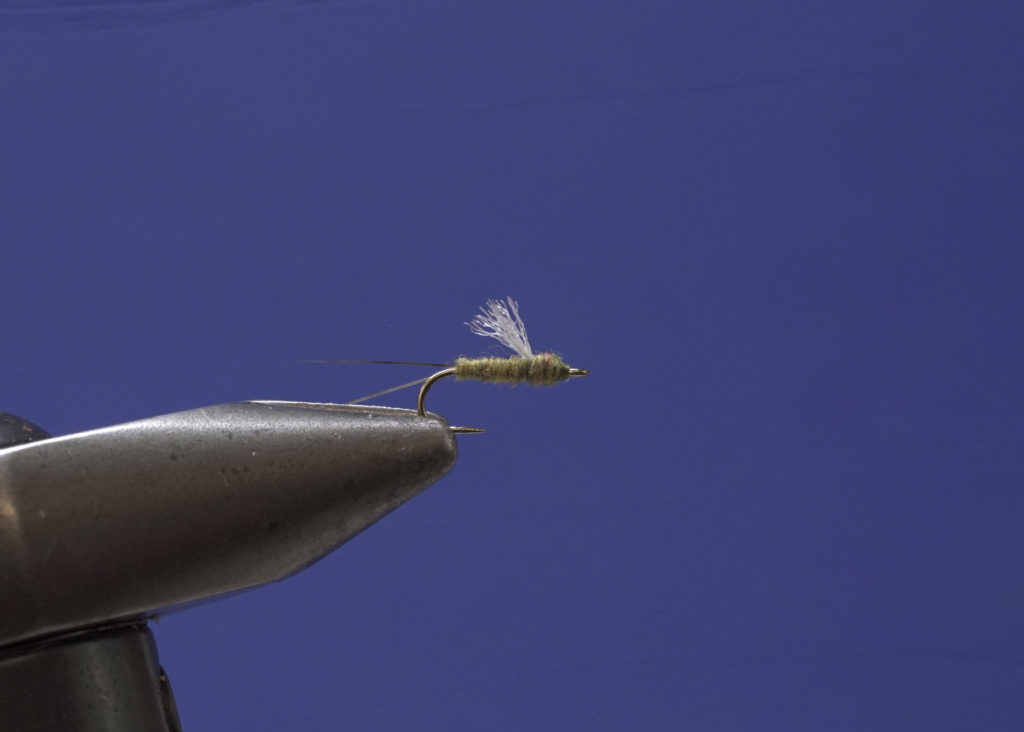Trout are popular with fly fishers due in part to their habit of eating small prey. As a result, they must feed frequently. Every time they feed provides us with another opportunity for them to take our flies. The dark side of this habit surrounds a trout’s affinity, at times, for feeding on tiny prey.
Advertisement
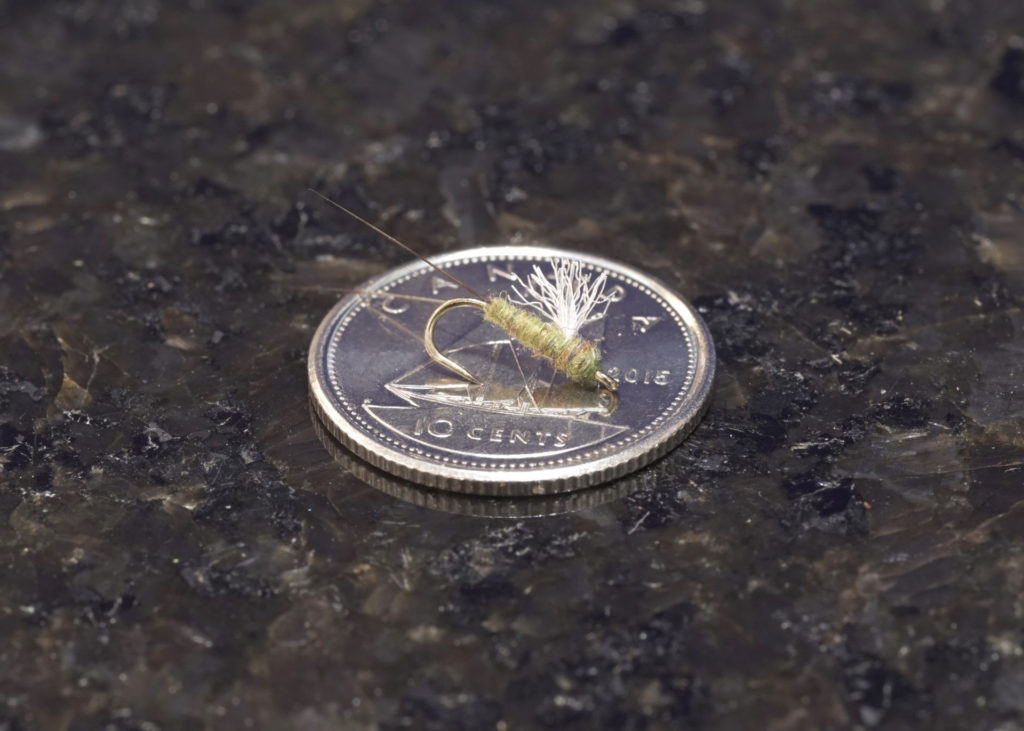
Baetis or blue wing olive mayflies are a prime example of this trait. They are abundant and hatch in large numbers. An insect seemingly tailor-made for the fly fisher. Trout feed on the nymphs, emerger and adults. They hatch twice a season, and the nymphs are available year-round. There is a downside due to their tiny size: size #18 would be considered large. To compete, you must tie tiny flies. Rim Chung’s versatile Rim’s Semblance or RS 2 is an excellent example of what a tiny fly should be.
Being able to see and tie on tiny hooks is perhaps the most obvious challenge. Begin by tying in a bright environment. You can never have too much light when tying, small flies or otherwise. If you need to wear magnifying ‘cheater’ glasses, wear them. Some tyers prefer tying lights featuring built-in magnifiers. Headband magnifiers are also popular.
Advertisement
Learning to be comfortable working with and tying on small hooks is essential. Hook style and eye design play a role. Curved scud hooks are an option, and they allow for the use of a slightly larger hook to achieve the same body size as a standard hook due to their one extra short shank length. Consider using straight or up eye hooks. These hooks provide a better hook up ratio due to their unobstructed gape. Many manufacturers offer oversized eye hooks to aid tying tiny flies onto the tippet. Make sure your vise can manage minute hooks. Midge jaws are an option on some vises.
Push-button, hackle or electrician’s pliers are great for grabbing and holding tiny hooks, as they aren’t easy to pick up. Push-button pliers can be used to place the hook into the vice or to steer the hook point into a bead. You can also place several beads into a small container and move the hackle pliers and hook around until you snag one.
Advertisement
Avoid excessive thread bulk. Don’t use thread larger than 8/0 or 70 denier. Specialty, fine diametre threads are an option, but you may have to develop a delicate touch to avoid accidental breakage. Some fine diametre threads are only available in one colour. Use a permanent marker to turn a single-color thread into any colour you desire.
Use only enough thread to do the job. Periodically untwisting the thread by spinning the bobbin counter-clockwise creates flat, low-profile wraps. A counter-clockwise spin also causes the thread to jump back, making it easier to tie in materials.
Get into the practice of tying more than one material in at once. Tying both the tail and rib in together reduces bulk and tying time. Thread also doubles as an excellent body material.
There are several tying and material practices to ease the stress of tying tiny flies. Use synthetics whenever you can, as they can be pulled or cut to length. Tie in tails longer than needed and pull them to length. Trimmable synthetic fibre makes excellent legs. If you are using Mylar for a wingcase, avoid trimming the excess. Nip and tear the excess to avoid excessive thread wraps. If possible, break off rather than cut materials for a cleaner tie off. This practice works well with peacock herl and fine wire. Use fine dubbing blends and apply it sparingly. Apply just enough dubbing to colour the thread or turn it fuzzy. Try using a superglue or UV resin tie off to avoid excess thread bulk from a whip finish.
Developing the skill to tie and fish tiny flies is rewarding. Who knows, with practice and perseverance you may be able to join the 20/20 club, catching a 20-inch or greater fish on a size #20 or smaller fly.
RS2 (Blue Winged Olive)
Designed by Rim Chung
Hook: Straight eye dry fly, #18 to #22
Thread: 8/0 or finer, Colour to compliment body
Tail: Micro-barred fibbetts, brown
Body: Superfine or Frog’s Hair Dubbing, olive
Wing: EP Trigger Point, Z-Lon, Antron, flue from the base of a hackle feather, white or dun, flat braid, pearlescent
Thorax: Superfine or Frog’s Hair Dubbing, olive
Tying Instructions
- Cover the front half of the hook with tying thread. Using two to three wraps, tie in two micro fibbett fibres at the mid-point on top of the shank. Pull the tail fibres to length, approximately one-and-one-half times the shank length. With the tail pulled to length, secure the remainder of the tail fibres down the shank to the hook bend.
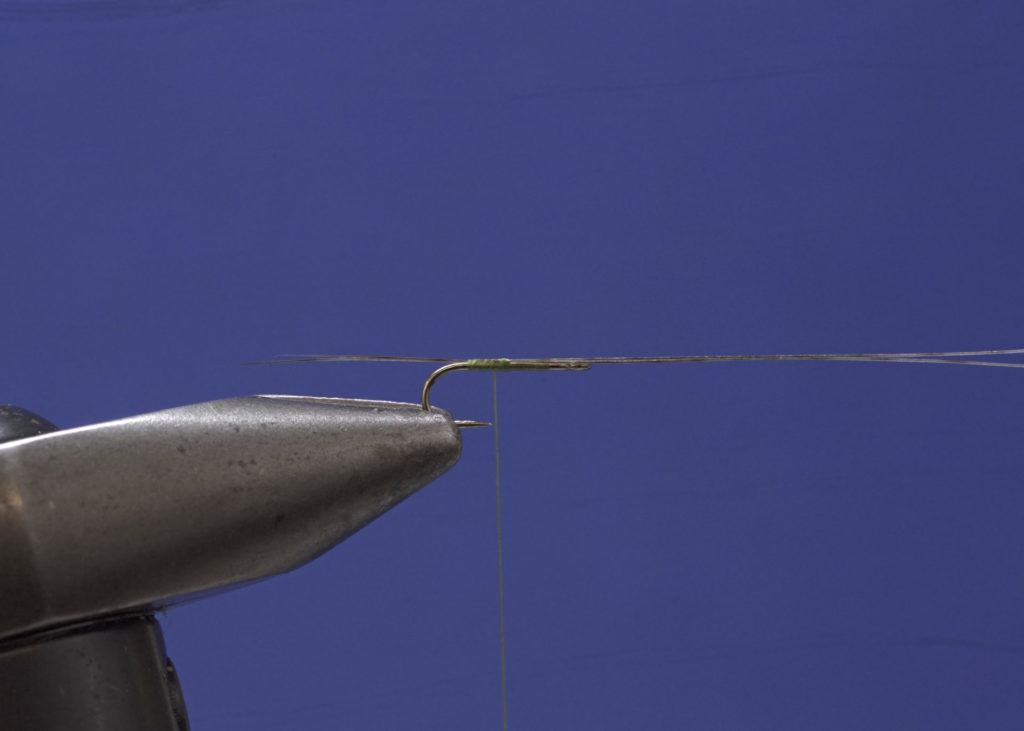
- Double a short length of tying thread around the bend of the hook. Divide the tail fibres. Due to fly size, a dubbing needle can be helpful in splitting the tail fibres. Pull the doubled end of the thread up through the tail fibres to divide them. Secure the doubled tying thread in front of the tail. Wind the tying thread forward to the two-thirds point on the hook. Trim the excess tying thread and tail fibres.
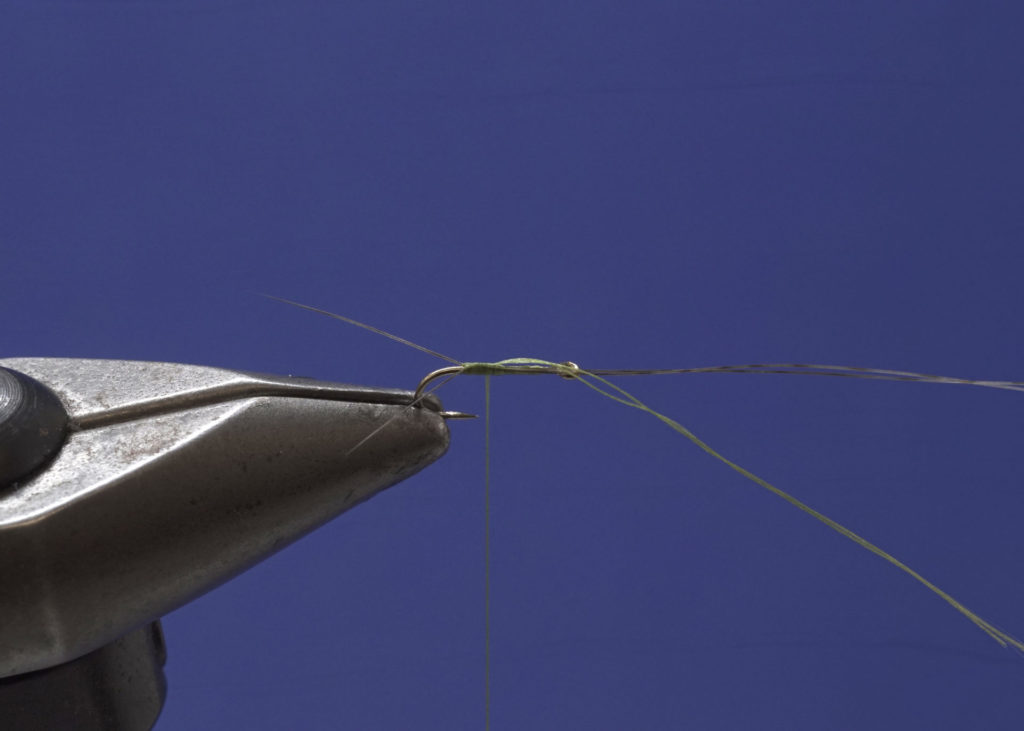
- Dub a neat, slender body from the base of the tail forward to the two-thirds point on the shank. Raise the tail fibres by placing the first wrap of dubbing under the base of the tail. Build a slight shoulder at the front of body to help prop the wing up.
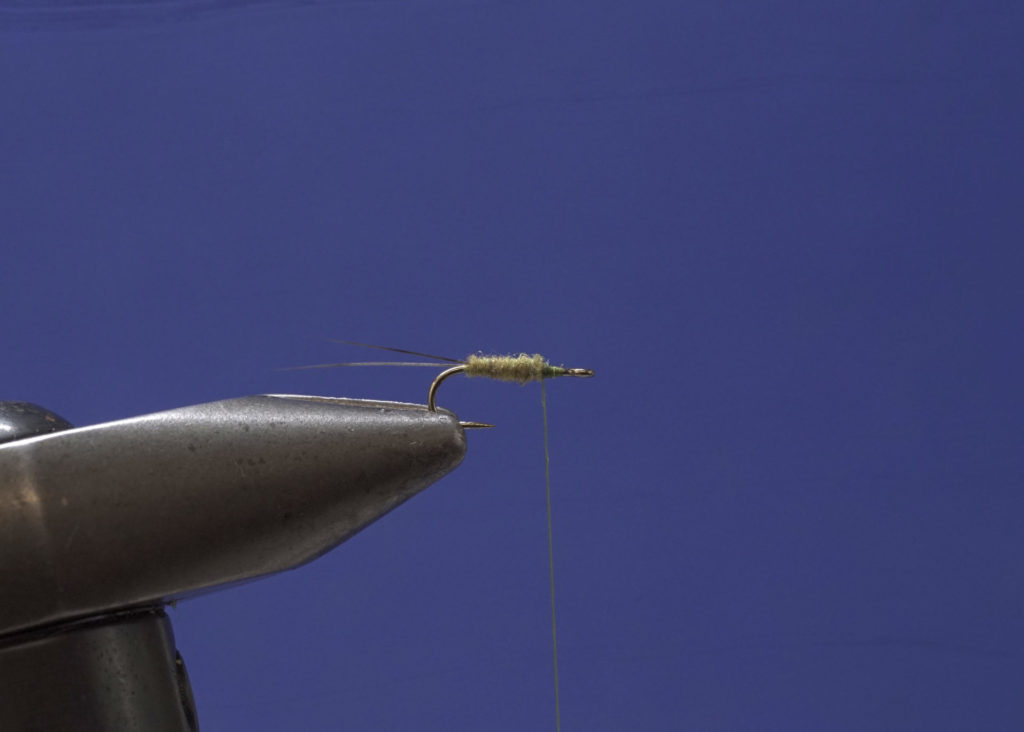
- Tie in the wing directly in front of the body.
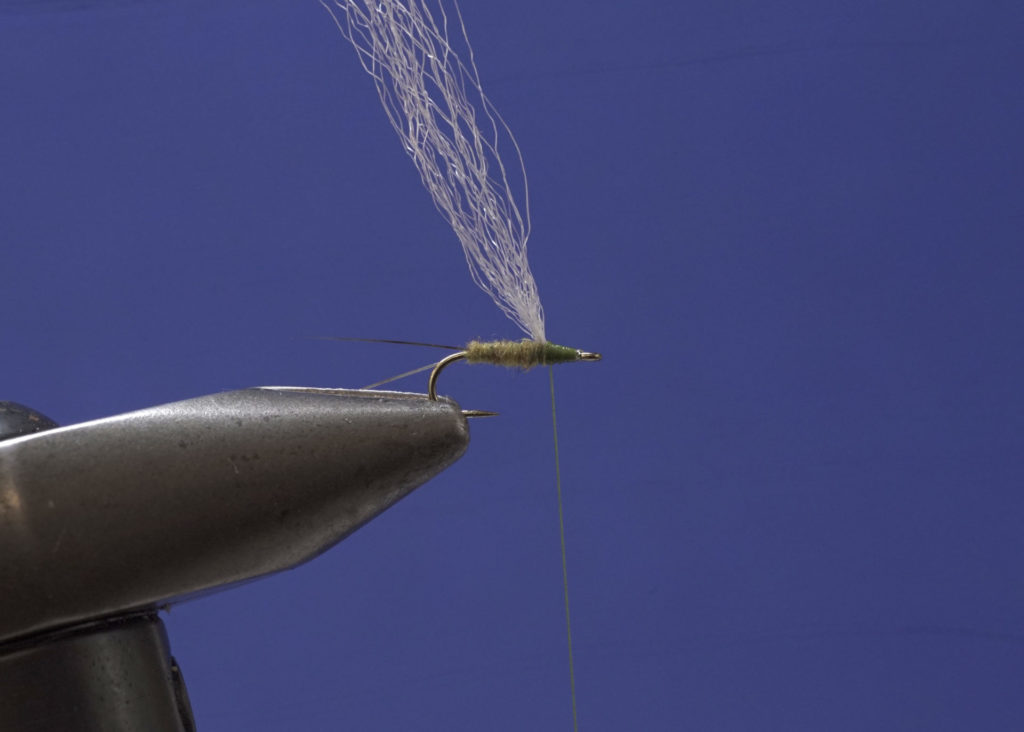
- Dub the thorax.
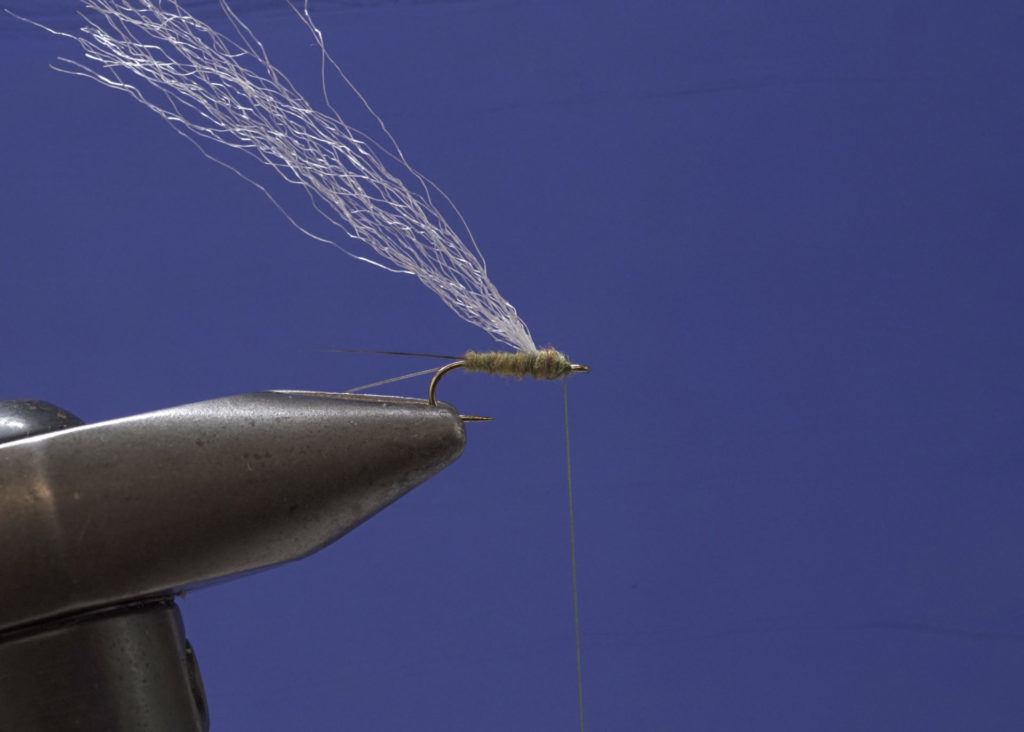
- Build a neat head, whip finish and apply head cement. Pull the wing forward and trim it even with the hook eye. Push the trimmed wing back into position so it flows back over the body.
